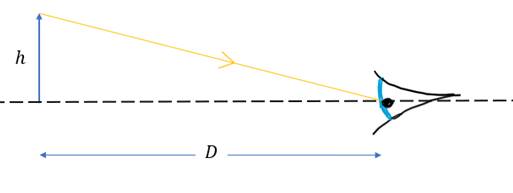A magnifying glass is used, as the object to be viewed can be brought closer to the eye than the normal near point. This results in
Suppose the object has height h. Let it be viewed unaided at a distance, D.
The angle suspended at the eye is given by:![]()
As the angle is small, the tangent of angle is approximately equal to the angle itself,
![]()

Now, let us view the object using the magnifying glass (convex lens). As the image is formed on the same side as the object, the image is virtual. Let the image distance be D.

The angle subtended by the image at the eye is given by:![]()
Virtual image formed by a convex mirror is always enlarged. So,
![]()
Thus,![]()
Thus, option (a) is correct.
Option (b):
When we view an object through a magnifying glass, we see it on the same side as the object. The image formed is virtual, erect and enlarged as can be seen in the ray diagram above.
Option (c):
As the image forms is enlarged, the field view is reduced. Hence, option (c) is incorrect.
Option (d):
The magnification (both linear and angular) is given by:
![]()
Also, by similar triangles, we have
![]()
Note that v is the distance of the near point from the eye. As this distance is finite, m is finite (Practically, object distance (u) cannot be zero).
Thus, option (d) is incorrect.